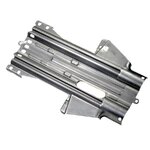- Messages
- 2,515
- Reactions
- 1,494
The way the CT law is phrased, "majority finished" or something like that, suggests that the replacement for 80% will be 50%. At 50% the work will be too much of a pain for most hobbyists.
But really, banning the pieces or banning the practice are pretty much the same - except the pieces are easier to control.
The main problem being a there is no way to grandfather older ghost guns because they have the exact same markings as brand new ones. So if people can buy 80% receivers without controls because it isn't an ATF item, then they can make them without any ability to prevent new ones.
But really, banning the pieces or banning the practice are pretty much the same - except the pieces are easier to control.
The main problem being a there is no way to grandfather older ghost guns because they have the exact same markings as brand new ones. So if people can buy 80% receivers without controls because it isn't an ATF item, then they can make them without any ability to prevent new ones.














